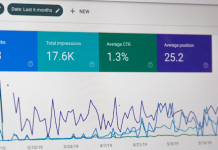Maintaining and improving efficiency and productivity levels represents a priority and a challenge for businesses in all industries. This has led to the development of a series of methods and processes that are meant to facilitate business growth and support executives and managers in their pursuit of progress. Gemba Walk is one of the practices that has proven extremely efficient in this respect, which is why an increasing number of companies rely on it to improve their operations.
So, if you want to find out what Gemba Walks imply and how they can benefit your business, this article is going to shed a bit of light on the topic.
What is a Gemba Walk?
A Gemba Walk is an integral part of the lean management philosophy that aims to allow managers and those in leadership positions to observe employees in their work environments and gain a better understanding of the processes that take place in the company, especially in the production department, so they can identify issues and find suitable solutions to address them.
The term Gemba Walk is derived from the Japanese word Gemba or Gembutsu which translates as the real place. So basically, a Gemba Walk refers to a structured tour that brings executives to the factory floor or the place where the work happens, amongst employees, enabling them to make better-informed business decisions based on their findings.
How to conduct Gemba Walks successfully
Gemba Walks can be used by companies in almost all industries and sectors and usually comprise three central questions and 11 basic steps. The practice can be tailored and adapted to suit a variety of workflows, but regardless of these variations, there are four main aspects to consider if you want to conduct a Gemba Walk the right way and ensure optimum results.
Schedule and notify employees
It’s important to schedule the Gemba Walk at an adequate time when you’ll be able to watch your employees perform their activities in a way that allows you to gain access to the information you require. It’s also necessary to notify your employees of the date and time when the Gemba Walk will take place, so they can understand what’s happening and continue to work as usual.
Prepare questions
Gemba Walks are not about observing employees and workflows from afar and then drawing conclusions. Interaction with team members also plays an important role in the process, so you’ll have to prepare a set of questions for your employees that will help you get hold of the information you require. You need to decide on the goals you want to achieve and the areas you want to target in order to formulate the right questions.
Observe processes without interfering
Once you’ve started your Gemba Walk, you’ll have to monitor what employees are doing closely and stop to ask questions whenever you find it necessary, but make sure you don’t interfere in the workflow. You might be tempted to step in and offer help or suggestions, but that would contradict the very purpose of the walk. So, you’ll have to keep your distance and interact with team members without influencing them in any way.
Document and interpret observations
Gemba Walks are pretty simple and straightforward processes, so you might not need complex tools. However, since you’ll be collecting considerable amounts of information, you’ll have to record the data and the observations you’ve made throughout. Employing a Gemba Walk checklist will help you keep track of all the questions and the notes you’ve taken, making it easier for you to evaluate them later on and obtain valuable insights.
Incorporating Gemba Walks into your business comes with a wide range of benefits, so make sure you have a good grasp of the practice and the steps it involves if you want to make the most of it.








